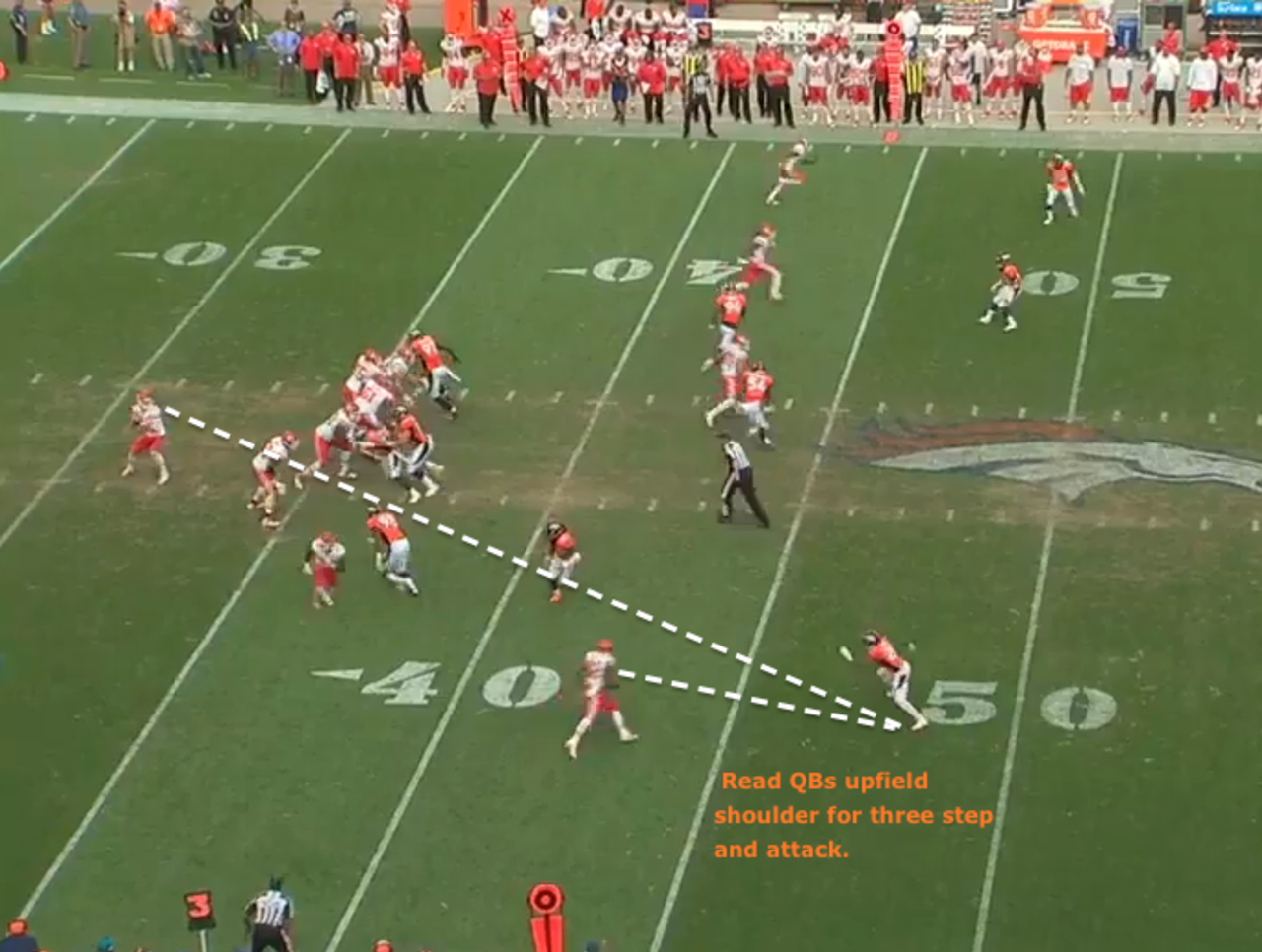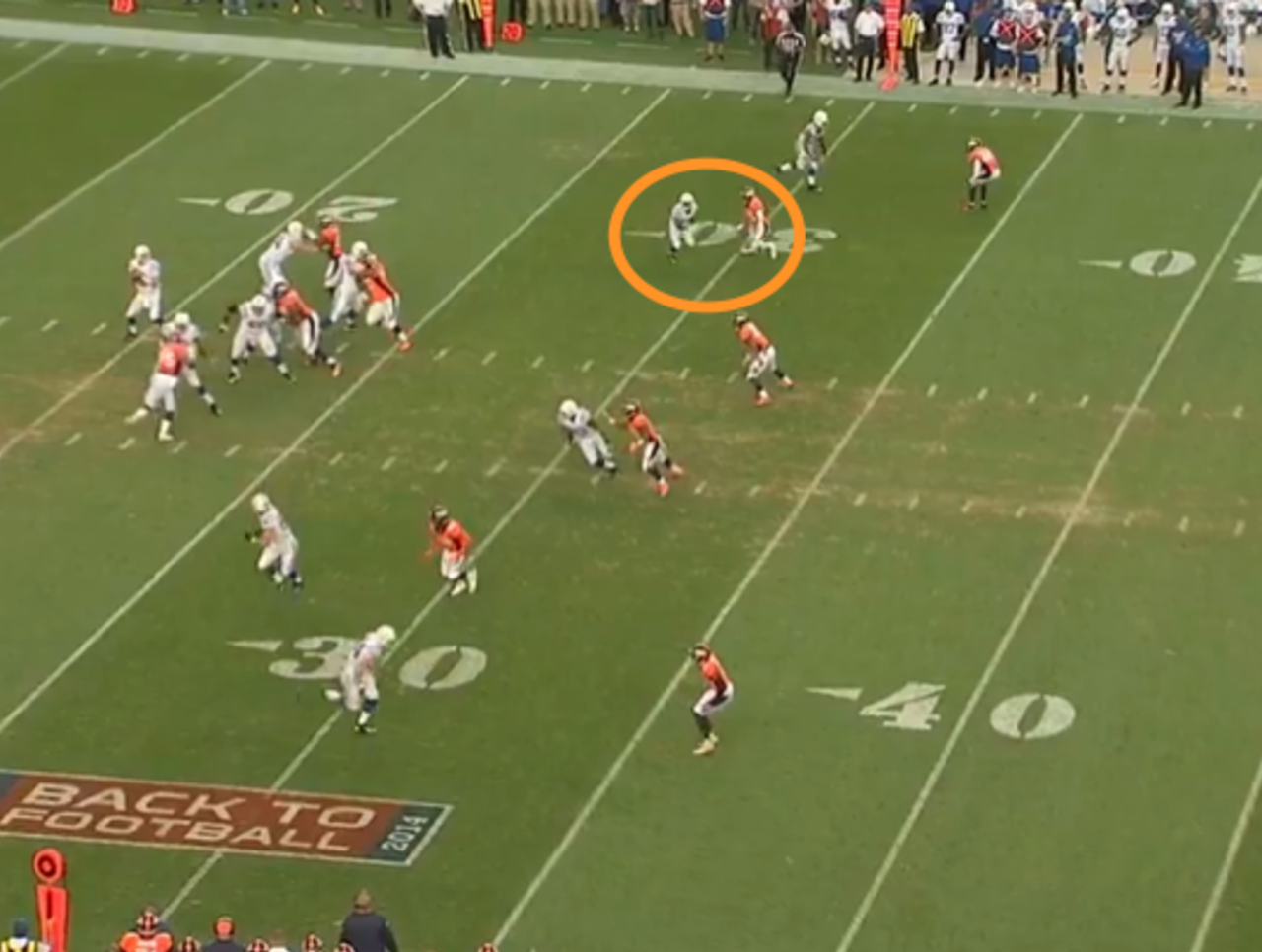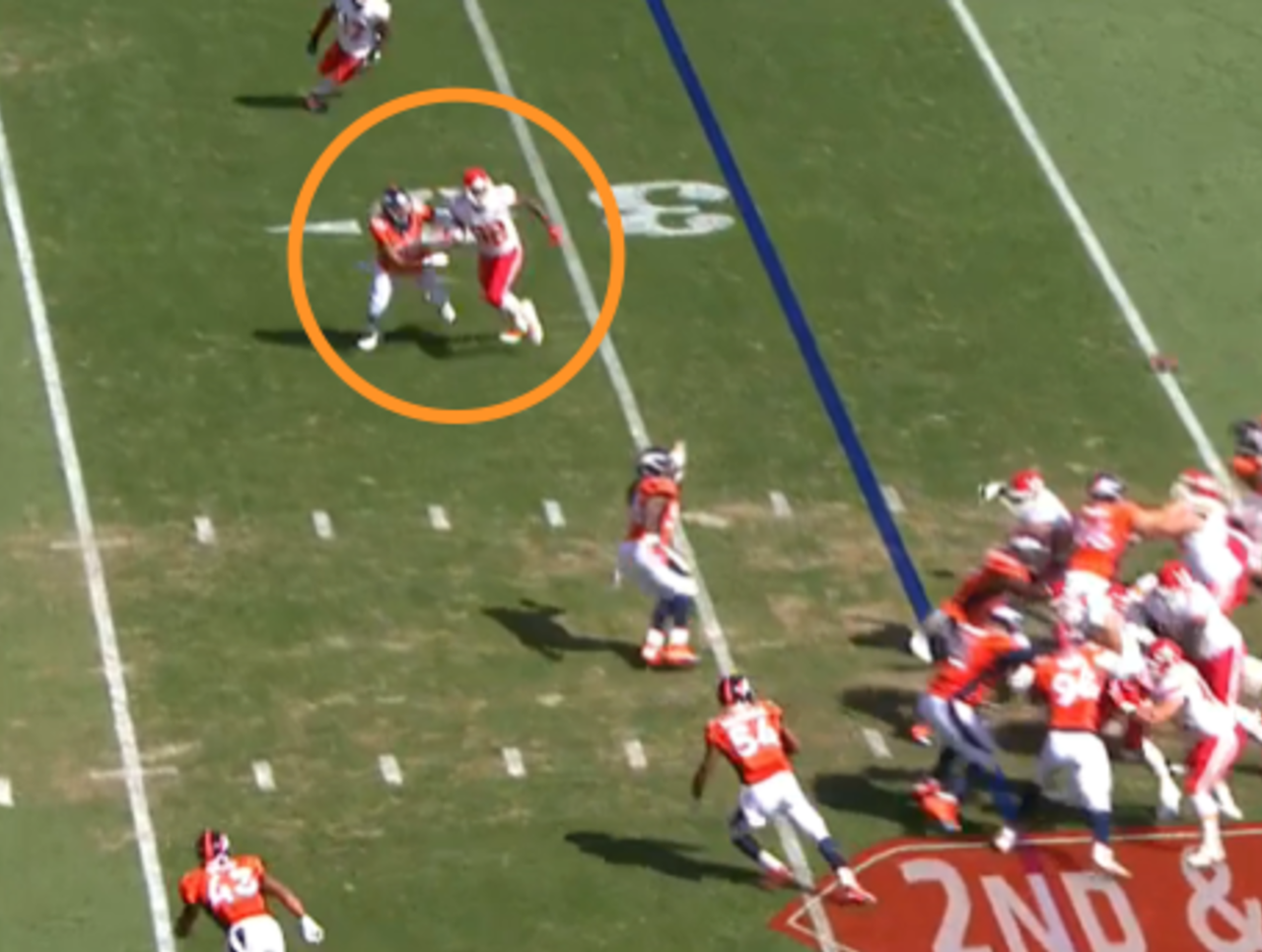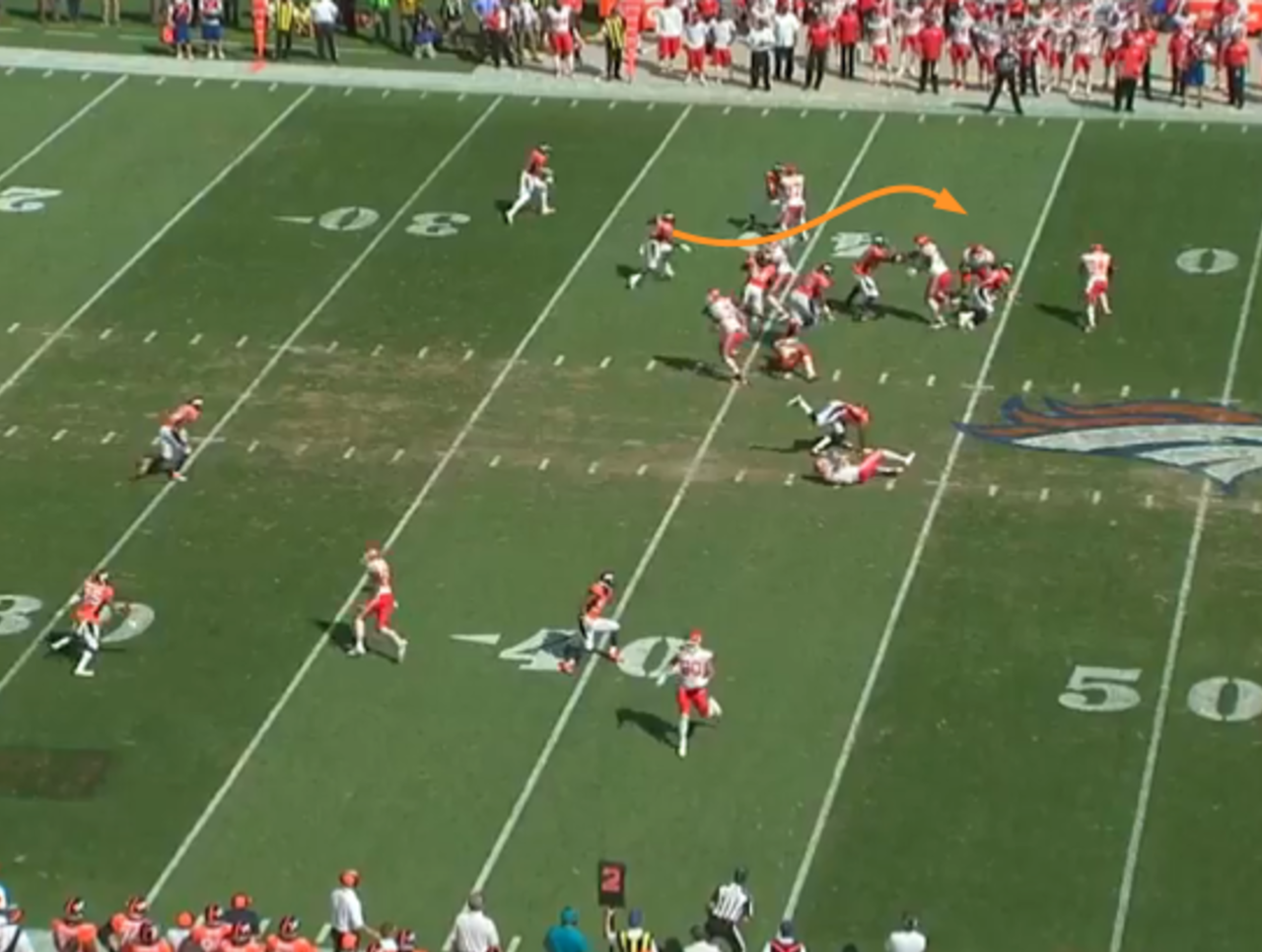Film Room: Breaking down the Broncos new-look secondary ahead of their Super Bowl rematch
When Seattle Seahawks quarterback Russell Wilson takes his first snap against the Denver Broncos on Sunday, he'll see different faces than he did in February’s Super Bowl.
Deep and outside will be cornerback Aqib Talib, who was signed in free agency after he left the New England Patriots. He's one of the best cornerbacks in the game and is a playmaker for the Broncos.
In the slot, Wilson will see Chris Harris, who tore his right ACL in Denver's first playoff game against the San Diego Chargers last season. Harris is one of the most underrated players in the NFL and is capable of playing outside or in the slot, but he's at his best in the slot.
Underneath, in the middle of the field, will be safety T.J. Ward, who came over in free agency from the Cleveland Browns and brings physicality that the Broncos lacked last season. Whether it's against the run or the pass, Ward quickly gets downhill and is an enforcer in the middle.
The three defensive backs are Sunday's X-factors for the Broncos. They'll be galloping around and breaking on the ball every chance they get.
Aqib Talib
Talib has always had the potential to be the NFL's best cornerback. He's long, athletic and physical. There are few cornerbacks who are as complete as Talib, however, what's often held him back from realizing his potential are injuries and technique.
Talib has struggled with hamstring and hip injuries his entire seven-year career. Last season, he collided with then-rival wide receiver Wes Welker on a pick play during the AFC Championship, suffering what he termed a "deep bone bruise" and left the game. The Broncos capitalized on his absence and carved up the Patriots defense on their way to the Super Bowl.
Despite Talib's injury history, the Broncos signed him at the start of free agency to a six-year, $57 million deal. The deal has paid off so far because he's finally living up to his potential. He's the second-best cornerback in the NFL, according to Pro Football Focus. He's allowed a 56.3 quarterback rating and 41.7 completion percentage, with two pass breakups on 12 targets.
One of Talib's breakups came late in the fourth quarter in Week 1. He was lined up 10 yards off, in man coverage, against Indianapolis Colts wide receiver T.Y. Hilton, who was the lone receiver to the quarterback's right and a likely target.
The Colts were running a slant-flat concept to that side. Hilton would run a three-step slant and the in-line tight end would run a quick flat route that would ideally freeze Talib for a split second to get Hilton open. But Talib was anticipating the concept all along.
When Hilton cut across and into the middle of the field, Talib kept his hips square with outside leverage before he attacked downhill. He ran to Hilton's inside hip instead of his outside.

By attacking the inside hip, Talib put himself in position to bat the ball away before Hilton had a chance to snatch it.
Talib's technique has improved over the years. He still has breakdowns, but they are far less frequent than before. He's also improved his film study and does a better job of recognizing formations and concepts.
Consider this play from Week 2 against the Kansas City Chiefs. It was third-and-5, and the Chiefs isolated wide receiver Dwayne Bowe outside the numbers against Talib. Their plan was to run a similar slant-flat concept to the one the Colts ran in the red zone the previous week.
When the play began, Talib shifted inside from his nine-yard cushion and read Bowe's route. It was a three-step slant intended for a quick throw by the quarterback. When Bowe's hips turned inside, Talib planted his foot in the ground and attacked downhill.

The quarterback didn't even raise his shoulder to throw the ball yet, but he didn't need to. Talib already knew where the ball was going because the quarterback's upfield shoulder pointed at Bowe.
When the ball was thrown, he jumped in front of Bowe and intercepted the pass. Unfortunately, one of his teammates was flagged and the interception was called back.
Chris Harris
There's a difference between Harris and Talib. Harris has better footwork and technique than Talib ever has. His backpedal is crisp. He's much more patient in coverage than Talib, making him a good fit for the slot cornerback position.
In the slot, cornerbacks have little room to make a mistake. One step and they're behind. Two steps and they're looking at the back of a receiver's jersey. Harris rarely makes mistakes because he doesn't open his hips too early. He waits for the receiver to cut and then opens up. This lets him make a tackle quickly, giving up few yards after the catch. He's given up only eight yards after the catch, according to Pro Football Focus.
Against the Colts, he was lined up in the slot against Hilton. The Colts thought they had a mismatch because of Hilton's quickness but when Hilton released from the left slot alignment and shook his shoulders, Harris didn't move. He kept his shoulders square and waited. When Hilton finally cut inside, Harris let him because he had help in the middle. It was Cover 3, meaning four underneath defenders, including two in the middle.

When Hilton cut across the middle, Harris was behind him to bait the quarterback. If he ran immediately to Hilton's inside hip, there was a chance he would get caught too far underneath and the pass would go over his head. The quarterback took the bait, throwing the ball in front of Hilton. Simultaneously, Harris dove toward Hilton's inside hip, batted the pass down as both fell to the ground.
Although it doesn't always look difficult for Harris, playing the slot cornerback position is exactly that. It's arguably the hardest position to play in the secondary because there isn't as much help as there is downfield.
There are also different types of matchups in the slot. While in Week 1 Harris faced the 5-foot-9, 178-pound Hilton, he faced the 6-foot-2, 221-pound Bowe in Week 2. Both required the same patience at the line but with Bowe, Harris also had to be physical.
Bowe was in the slot of a twins-right set on second-and-9. Harris was a little more than three yards across from him with his shoulders and hips square. He was on an island this time, with no help inside or outside. Wherever Bowe went, Harris had no choice but to go. One step, though, and he was behind.
Bowe shook his shoulders and took three quick steps before he abruptly cut inside. Harris wasn't flustered. He was patient and opened his hips up once Bowe cut. Then he slid his feet and sneakily grabbed Bowe's outside arm.

The referees couldn't see Harris grab and tug Bowe, which allowed him to get in front of the receiver. When the pass came in, Bowe was out of position to catch the ball, while Harris leaned in and batted it away.
T.J. Ward
If you don't look closely enough, you might miss Ward. He's usually somewhere in the box, where he can get lost among the linebackers. He's 5-foot-10, 200 pounds, but he looks like one of them. He looks dangerous, like he's always ready to strike.
The Colts learned that the hard way in Week 1. They tried to run crossing routes in front of Ward to pick up extra yards after the catch, but they were stonewalled.
From their 44, the Colts lined up wide receiver Hakeem Nicks to the far right of the formation and well outside of the numbers. Before the snap, he cut his split down to a stacked set right behind the slot receiver, who would run a deep route to clear the underneath for Nicks.
When Nicks ran the shallow crossing route, he went straight into the waiting arms of Ward. Ward was one of the Broncos' underneath defenders. He was the curl-flat defender in Cover 3, responsible for cleaning up any receivers in that area. Behind Ward was a tight end running a corner route designed to deepen his coverage so Nicks could pick up nine yards for the first down.
But Ward was aware of the situation. Like Talib and Harris, he knows pass concepts and what to expect from them. There's only so many an offense can run. He dropped deep like he was covering the corner route and then attacked downhill once the pass was thrown.

Nicks was in trouble. He was headed for a collision with Ward and those rarely end well.
Once he caught the pass, he turned around and looked downfield where Ward was a half dozen yards in front. Ward had the perfect angle to make the tackle and Nicks couldn't escape it. Nicks tried to jump back as Ward dove forward, but Ward wrapped his arms around Nicks' feet and dragged him down for the tackle short of the marker.
Ward's at his best when he's playing downhill. Among safeties, he's ninth-best in run stop percentage within eight yards of the line of scrimmage, according to Pro Football Focus. Fifty-one percent of his snaps in 2014 have been in that area of the field.
Against the Chiefs, Ward showed his run prowess. He was 11 yards from the line of scrimmage when the Chiefs called a stretch run to the right. It was second-and-20, so he was deeper than usual. But as soon as the running back took the handoff, Ward started to run downhill.

Blocks were set up by the offensive line and wide receiver to create a big alley for the running back to run through. Unfortunately for him, it was the same alley that Ward was filling. Ward widened as the runner did, waiting for him to finally turn downfield. When the runner did, Ward aggressively came forward. Soon, he closed the alley up and tackled the ball carrier for a gain of only one.
Ward is a key part of this Sunday's matchup with the Seahawks. He'll be tested when he’s forced to tackle running back Marshawn Lynch.
Lynch is averaging 5.6 yards per carry through two weeks and has run for a first down on more than 30 percent of his carries, both career highs so far, according to NFL.com.
If Ward's physicality prevails, it'll cut the Seahawks gameplan in half and force them to rely on Wilson, their quarterback. This doesn't bode well for their offense because the Broncos are only allowing 6.6 yards per attempt, 11th-best according to Pro Football Reference.
They're also holding quarterbacks to an 81.3 quarterback rating, which is more than 30 points lower than Wilson's current 114.7 rating. A big reason why is their X-factors in the secondary.